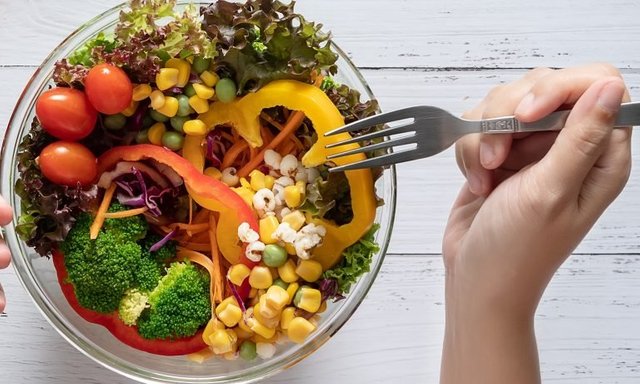
Confused by all the conflicting nutrition advice out there?
What is a healthy diet?
A healthy diet helps to protect against malnutrition in all its forms, as well as noncommunicable diseases (NCDs), including such as diabetes, heart disease, stroke and cancer.
Unhealthy diet and lack of physical activity are leading global risks to health.
Healthy dietary practices start early in life – breastfeeding fosters healthy growth and improves cognitive development, and may have longer term health benefits such as reducing the risk of becoming overweight or obese and developing NCDs later in life.
Energy intake (calories) should be in balance with energy expenditure. To avoid unhealthy weight gain, total fat should not exceed 30% of total energy intake (1, 2, 3). Intake of saturated fats should be less than 10% of total energy intake, and intake of trans-fats less than 1% of total energy intake, with a shift in fat consumption away from saturated fats and trans-fats to unsaturated fats (3), and towards the goal of eliminating industrially-produced trans-fats .
According to the Dietary Guidelines for Americans 2020–2025pdf icon[PDF-30.6MB]external icon, a healthy eating plan:
Emphasizes fruits, vegetables, whole grains, and fat-free or low-fat milk and milk products
Includes a variety of protein foods such as seafood, lean meats and poultry, eggs, legumes (beans and peas), soy products, nuts, and seeds.
Is low in saturated fats, trans fats, cholesterol, salt (sodium), and added sugars
Stays within your daily calorie needs
Fundamentals of healthy eating
Protein gives you the energy to get up and go—and keep going—while also supporting mood and cognitive function.
Fat. Not all fat is the same. While bad fats can wreck your diet and increase your risk of certain diseases, good fats protect your brain and heart.
Add more fruit and vegetables to your diet
Fruit and vegetables are low in calories and nutrient dense, which means they are packed with vitamins, minerals, antioxidants, and fiber. Focus on eating the recommended daily amount of at least five servings of fruit and vegetables and it will naturally fill you up and help you cut back on unhealthy foods. A serving is half a cup of raw fruit or veg or a small apple or banana, for example. Most of us need to double the amount we currently eat.
To increase your intake:
Add antioxidant-rich berries to your favorite breakfast cereal
Eat a medley of sweet fruit—oranges, mangos, pineapple, grapes—for dessert
Swap your usual rice or pasta side dish for a colorful salad
Instead of eating processed snack foods, snack on vegetables such as carrots, snow peas, or cherry tomatoes along with a spicy hummus dip or peanut butter
Calcium-rich foods
In addition to fat-free and low-fat milk, consider low-fat and fat-free yogurts without added sugars. These come in a variety of flavors and can be a great dessert substitute.
Meats
If your favorite recipe calls for frying fish or breaded chicken, try healthier variations by baking or grilling. Maybe even try dry beans in place of meats. Ask friends and search the internet and magazines for recipes with fewer calories ― you might be surprised to find you have a new favorite dish!
Make sure you like this post .. (@)